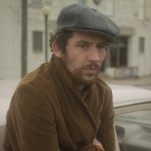When Mystery Authors Become Real-Life Detectives: Part 1
If Jack the Ripper were still alive, he’d probably rest easy knowing Patricia Cornwell is on his case.
A decade ago, the bestselling mystery novelist spent millions trying to prove that a beloved British painter committed the Ripper killings. Her nonfiction Ripper book—confidently subtitled Case Closed—was laughed out of the true-crime fan club as absurdly incompetent. But Cornwell recently announced she will publish a new Ripper book next year, this time with details of a “royal conspiracy.”
The bigger mystery is why detective-fiction authors often consider themselves real-life crime experts. The list goes all the way back to Edgar Allan Poe, who invented the mystery genre with three short stories—one of them an attempt to solve an actual murder. Arthur Conan Doyle, the creator of Sherlock Holmes, and P.D. James, whose Inspector Dalgliesh became a fave on PBS’s Mystery!, are among others lured by true-crime glamour.
In a new four-part series, Paste reviews the detection skills of these authors, and the verdicts are largely grim. We may never know who committed some infamous crimes, but these writers are often guilty of whipping up theories that make real life read like bad fiction.
We start with Cornwell, a rich, blonde writer from Miami who made a fortune with her novels about Kay Scarpetta, a rich, blonde forensic scientist from Miami. Cornwell says any similarities between author and detective are coincidental. Having reviewed her Jack the Ripper investigation, we have to agree.
The Case of Everyone’s a Critic
“Detective”: Patricia Cornwell
Resume: Ex-journalist, author of blockbuster Kay Scarpetta forensic-science mysteries.
Case: Jack the Ripper serial killings, London, 1888.
Suspect: Walter Sickert, a painter who “confessed” through his art.
Verdict: An ounce of logic is worth a pound of DNA testing.
The first media-sensationalized serial killer case, Jack the Ripper has spawned countless theories. Modern FBI profilers like John Douglas say the Ripper was probably an uneducated, obscure loner. But authors continue to float famous or fiendishly clever suspects.
Walter Sickert, a well-regarded painter, is one of them. He was first named in a 1976 book as part of the wildest Ripper theory, which involved Masonic ritual killings and a Royal Family conspiracy. Authors later made Sickert a lone suspect.
-

-

-

-

-

-

-

-

-

-

-

-

-

-

-

-

-

-

-

-

-

-

-

-

-

-

-

-

-

-

-

-

-

-

-

-

-

-

-

-








































